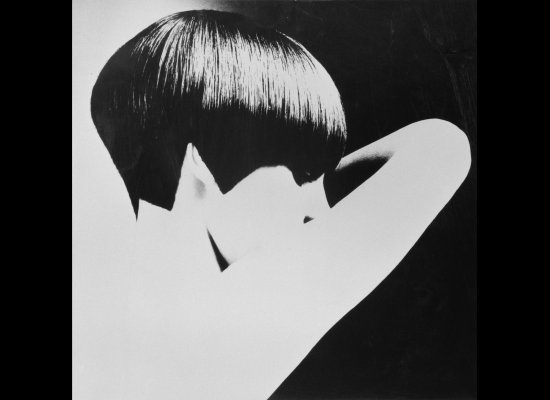Vidal Sassoon has always referred to himself as a “crimper,” a cheekily self-deprecating sobriquet that does little justice to the role he has played in revolutionizing hair care.
Sassoon’s aim, when he opened his first salon in London in 1954, was merely to “get rid of the superfluous”: the teased, sprayed, and lacquered bouffants and ringlets that perched on top of women’s heads like ornamental wigs. But in devising his architectural styles that fell into place with just a toss of the head, he led a change that was not only aesthetic—it was cultural, economic, and even political. Sassoon emancipated women from the burden of their weekly appointments at the salon, where they would sit under massive hood dryers until their ’dos had set. He altered their daily routines, giving them an independence from time-consuming maintenance before the mirror. He offered them a look that wasn’t just a mimicking of movie stars or a way to please their husbands—it was for them.
The sixties were about movement: Women were working; class hierarchies were tumbling down; colonial territories were in revolt. In fashion, photographers such as David Bailey, Terence Donovan, and Brian Duffy were capturing models in lively, kinetic poses that did away with the mannered, aristocratic forms of earlier eras. Designers like Courrèges, Mary Quant, and Rudi Gernreich were freeing women from the girdles and bustiers that squeezed their figures into stiff silhouettes. And Vidal Sassoon, a working-class Jewish boy, was letting hair down from its tight scaffolding of pins and curlers, making it move and dance and swing—a key word of the day.
Another break came when Sassoon gave the elfin young designer Mary Quant a razor-sharp bowl with heavy bangs.
the Five Point (a bowl with sharp Vs at the ears and nape of the neck)
the Nancy Kwan (a sleek angled bob, named for the actress)
the Asymmetric (a bob with one side dramatically longer than the other),
the Greek Goddess (a short, tousled perm)
Publicity coup of cropping Mia Farrow’s hair live on TV, for the much-ballyhooed sum of $5,000.
Sassoon’s “new eyeglasses haircut”a dome shape with a triangle cut into the bangs to frame a pair of Mila Schön sunglasses—is published in Vogue. September 1966
The smooth, streamlined precision of these cuts echoed the architectural
works of the Bauhaus, Frank Lloyd Wright, and Mies van der Rohe
I was as proud of the shop girls and nurses who saved a few shillings a week and had one blow-out haircut every couple of months as I was of the Vogue cover-girls. We were a melting-pot of class and race and money.
Sassoon learns he must be licensed to cut hair in America. Balks at taking the test, which “requires that I do finger waving, reverse pin-curling, and a haircut in which you thin as you cut—things that haven’t been used since Gloria Swanson was in silent movies.” Judge Lomenzo of the New York State board of cosmetology is quoted in the New York Herald Tribune, “We’re not going to be told what to do by these damn foreigners, especially those limeys. Over there you can’t tell the difference between the boys and the girls.”The New York Times later reports that Sassoon has given in, hired a tutor, and practiced his finger-waving in preparation for the test. “The scene was as incongruous as Courrèges suddenly taking sewing lessons.”He takes the exam and is passed.


















